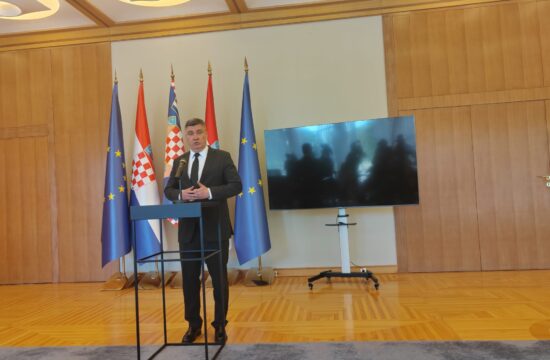If it implements the measures it is obliged to implement, Croatia could enter the European Exchange Rate Mechanism (ERM II) in the second half of 2020, European Commissioner for the Euro and Social Dialogue Valdis Dombrovskis told the conference "Future of the euro area as a currency union - Croatia on the path to the euro" on Friday.
The conference was organised by the Croatian Statehood Foundation, the Hanns Seidel Foundation and the Wilfried Martens Centre for European Studies.
Croatia needs to fulfill 19 measures in six various areas which it undertook to do in a letter of intent for membership of ERM II and the banking union. These measures are related to strengthening the capacity of the national statistics office, improving the business environment, state assets management, strengthening foundations for economic growth, etc.
Dombrovskis addressed the conference via video link and said that the efficient implementation of the measures and obligations was essential and that if it occurred, Croatia could enter the ERM II in the second half of 2020 already.
Dombrovskis added that joining the eurozone was a huge challenge for Croatia but that those efforts would pay off in terms of greater stability, opportunities and prosperity.
Finance Minister Zdravko Maric said that Croatia’s two letters of intent were accompanied with an action plan that sets out all the activities and measures. Two areas related to monetary and fiscal policy have already produced results and now focus is being shifted to structural policies, which includes state assets management and further facilitating business.
Evaluation by European institutions and eurozone members will depend on the quality of the results that the measures produce, Maric said, adding that Croatia would have to be in the ERM II for at least two years during which compliance with the Maastricht criteria would be tested. “If Croatia was in the ERM II today it would meet all five Maastricht criteria,” he added.
He recalled that the national economy was highly euroised, noting that removing the currency risk was high on the list of benefits of introducing the euro. As for the negative aspects of accession to the euro area, he cited the fear of price hikes among citizens.
The government has mechanisms to deal with that, such as dual pricing for the period of at least six months prior to and after the introduction of the euro, as well as tax policy measures, notably those regarding VAT, said Maric and noted that the experience so far showed that the lowering of the standard VAT rate did not necessarily result in lower prices.
Croatian National Bank Governor (HNB) Boris Vujcic said that the banking union was established with the aim of protecting taxpayers as much as possible from poor bank policies. That also entails supervision of systemically important European banks by the European Central Bank.
Vujcic added that Croatia’s accession to the common system of bank supervision was a precondition for entering the ERM II but that he did not consider it a major benefit in itself considering that Croatia has a very stable banking system, which is much better capitalised than the euro area banking system.




